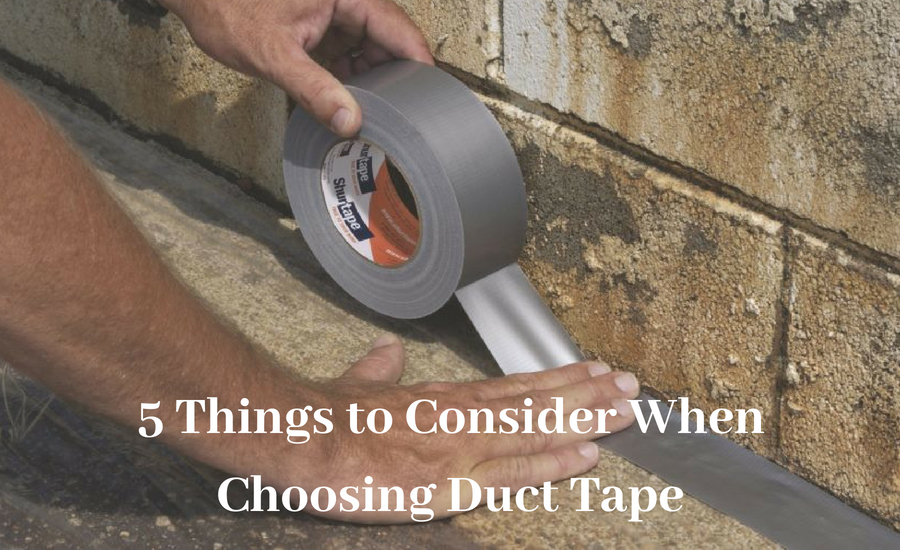5 Things to Consider When Choosing Duct Tape

Duct tape is an important tool for many jobs – and it’s critical to know which tape to use for which job. Plus, there are specialized duct tapes to make specific jobs easier. Even though duct tape can adhere to a variety of surfaces, some duct tapes will work better than others for certain projects. It is especially important to know which type of duct tape to use for specific jobs in situations where it is crucial for duct tape to perform correctly.
Choose a duct tape that is right for your next project with these 5 things to consider:
- Application Surface: Knowing the project’s application surface is vital when choosing a duct tape because of the wide variety of duct tapes offered. General-purpose duct tapes, for example, are used mainly for non-critical applications, such as holding, securing, bundling, and temporary repair jobs. For more heavy-duty projects that require a stronger hold, heavy-duty duct tapes are typically the best option, as they often provide better stick to a wider variety of surfaces than their general-purpose counterparts. Specialty tapes have also been formulated for more specific applications and surfaces: abatement tapes for containment applications, stucco tapes for protecting surfaces during stucco application, and HVAC tapes for HVAC applications, for example. Keep in mind the surface to which you will be applying the tape to ensure the best outcome for the job.
- Project Duration: The adhesive strength needed in a duct tape depends on the project’s duration. Short term projects often do not require a heavy-duty tape with aggressive adhesive, but a long-term project will often need the extra strength and thicker adhesive that heavy duty duct tapes provide. Even within each category of specialty duct tapes, there are options with varying types and levels of adhesion to accommodate the needs of a range of applications.
- Holding Power: Very similar to project duration in terms of strength, a tape’s holding power is a measure of how much stress the tape can withstand without failing. Temporary fixes and non-critical jobs typically do not require a tape with as much holding power as a long-term solution would. If you have a project that requires a long-lasting hold, especially in an application where the tape will be exposed to the elements, a heavy-duty duct tape will be the best option.
- Job Environment: Moisture, dust, dirt, humidity, UV exposure, and temperature can impact a tape’s ability to properly stick to the application surface. Heavy-duty duct tapes typically have a thicker adhesive, making it easier for them to stick to rough or dirty surfaces, and other specialty tapes are designed to maintain their hold even in very humid environments. Be sure to check the tape manufacturer’s recommended application surfaces to ensure you have the right tape for the task at hand.
- Co-Extruded versus Laminated Construction: The way tape is constructed may impact the tape’s performance in the application. Laminated duct tapes are the most traditional way of making tape, which involves a continuous combination of film, cloth, and adhesive in layers that are bonded together on top of one another. Laminated tapes are flexible and conformable to a variety of surfaces, delivering excellent performance for uneven or curved surfaces. Co-extruded duct tapes are constructed using a process that bonds the three layers of tape – polyethylene backing, cloth, and adhesive – together in a single, high-temperature step. This creates a permanent, airtight, and waterproof seal, which increases the tape’s strength and prevents delamination, making these tapes ideal for long-lasting and critical projects. Delamination may occur in laminated material, which results in the tape failure as the layers separate when subjected to repeated stress or harsh environmental conditions.
Do you have the right tape for the job? Find the best duct tape for your projects at Shurtape.com, and visit TapeUniversity.com for more tips on choosing and using tape.
Looking for a reprint of this article?
From high-res PDFs to custom plaques, order your copy today!






